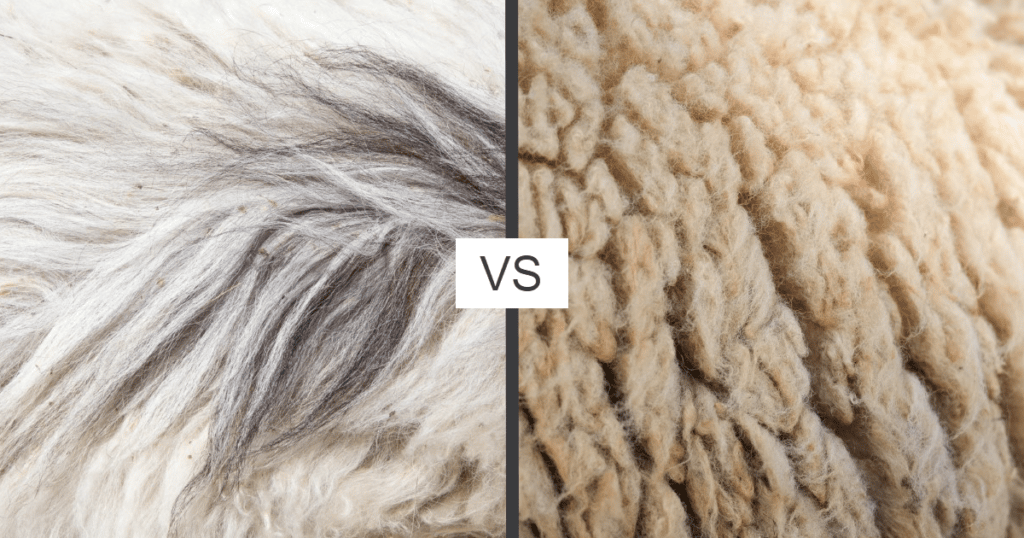Have you been searching for fine woolen products? If so, you’ve certainly come across not only wool and premium Merino wool, but also cashmere. So, what’s the difference between cashmere and wool? Let’s find out in a quick cashmere vs wool comparison article.
As products made from wool and cashmere are often marketed together, you may be surprised to learn that the primary difference between Cashmere and Wool is that wool comes from sheep and cashmere comes from the hair of a special kind of goat. And yes, sheep and goats are indeed different.
Today, we’ll take a deep dive into the differences between cashmere and wool. This exploration will help you decide which would be best for you.
What Animals Produce Cashmere and Wool?
As we mentioned earlier, wool comes from sheep. There are many different kinds of sheep, and certain kinds of wool are higher quality than others.
The quality of wool is organized by how fine the fiber is. The highest quality wool goods are produced with long-filament fibers that have outstanding tensile strength (this ensures durability), as well as crimp (crimp helps to retain shape over the long term).
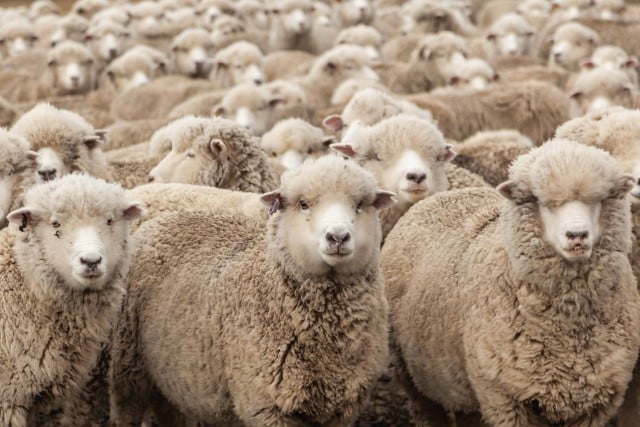
Wool is harvested through sheep shearing. Shearing is the process through which wool is shaved off of sheep with special equipment.
Higher-end wool that is used in the luxury market often feel quite similar to cashmere.
At the same time, though, lower-end cashmeres might not be as luxurious as higher-end wools. That is something that many consumers don’t realize.
Cashmere comes from goats. Specifically, it comes from Kashmir (also referred to as cashmere) goats, as well as pashmina goats and certain other breeds.
Rather than sheep’s wool, cashmere comes from hair grown on cashmere, pashmina, and a selection of other goat breeds.
Even though it’s not technically wool, some people call cashmere “cashmere wool.”
It’s better to avoid this terminology, however, as it can lead to confusion. Cashmere is softer, more lightweight, and finer than wool from sheep.
Also, its insulating properties of cashmere are three times better than wool.
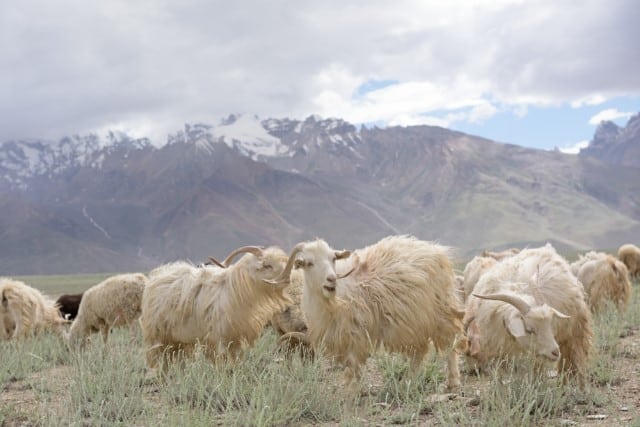
Cashmere provides eight times the warmth as sheep’s wool.
The primary producers of cashmere around the world today are found in China and Mongolia. There are other countries in Central Asia that have cashmere production.
Why is Cashmere So Much Softer than Most Wools?
Cashmere’s fiber qualities make this material much softer than most wools. To enjoy all the benefits of cashmere, though, it’s essential that you go with a high grade.
Lower grade and low quality cashmeres are usually a waste of money. If you want to invest in a cashmere sweater or other garment, do your research and go with a high grade.
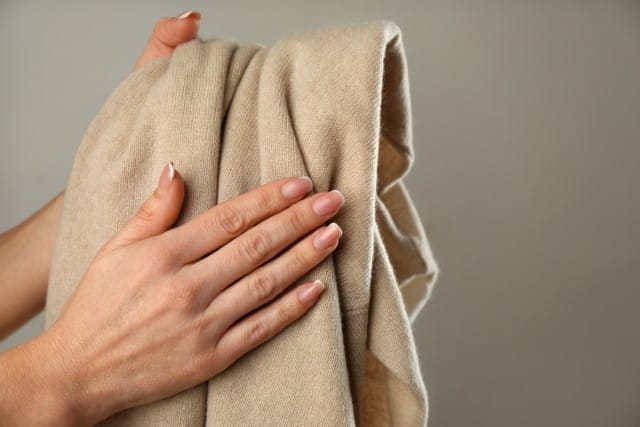
Why is Cashmere So Expensive?
There are several reasons why cashmere is so expensive. One is the fact that it only comes from the specific kinds of goats we mentioned earlier.
Another is the fact that each goat is able to produce a small amount of its hair every year. Collection of these fibers can only be collected once annually.
Also, after the fibers have been harvested and all the dirt, grease, and thicker hairs (that cannot be used) are removed, only about half of the original amount is left.
Cashmere processing is also very time consuming. The fibers must be aerated to prevent clumping and dyed to get the desired color.
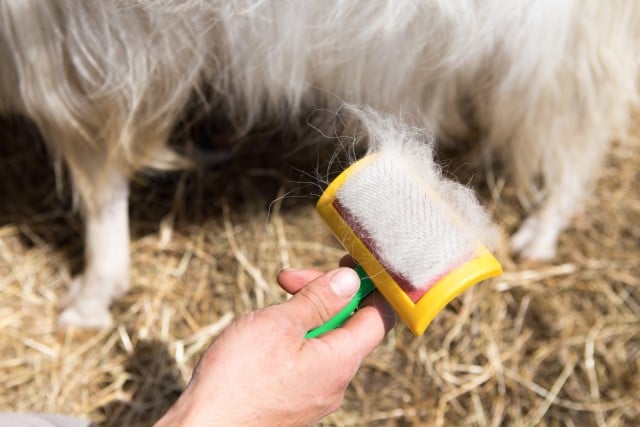
In order to ensure that the fibers are not destroyed, they must be handled with the greatest care through the entire process. Over-processing must be strictly avoided, as it can easily ruin the fibers.
Also, cashmere fibers must be carded.
The carding process is necessary for detangling and lining up the hairs to create thin sheets. This gets the fibers ready to be spun and made into yarn.
How is Cashmere Graded?
Cashmere quality can vary quite significantly, and low-quality cashmeres have become a big issue in recent years.
Cashmere comes in different grades. When buying a cashmere garment, you should find out the grade of cashmere that was used.
The fineness and length of cashmere fibers are key for grading.
Be careful when looking at some of the less expensive cashmere products that have recently become available. While many of the makers of these garments claim to offer all the features of cashmere for less money, they use lower grades of the fiber.
Additionally, they may use different kinds of processing that creates poor quality garments. To make matters worse, these garments will tend to be sold for more than double the price of wool.
Extremely cheap products that claim to be cashmere may not be completely cashmere at all. Alarmingly, some have been found with the hair or fur of other kinds of animals.
What is Merino Wool?
Merino wool is a superior quality wool that is comparable to cashmere in some ways. As such, you will find that it is quite expensive.
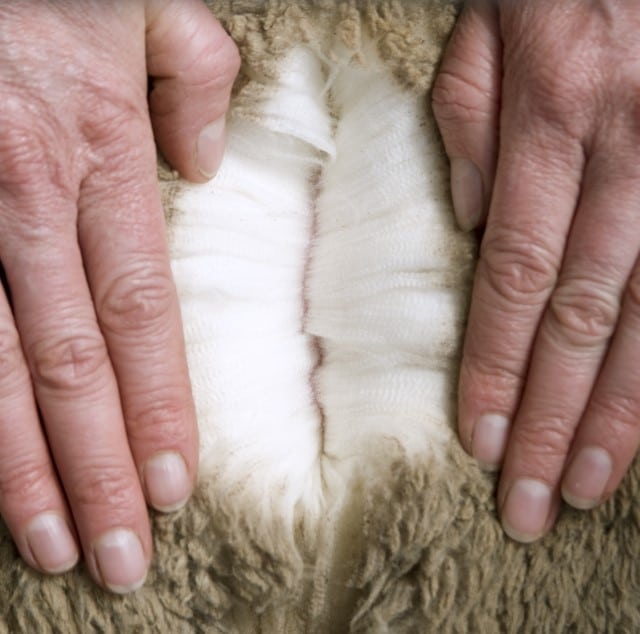
Merino wool comes from Merino sheep. Today, Merino wool farms are mainly found in Australia and New Zealand.
Merino wool is renowned for its versatility, breathability, fine texture, softness, and resilience.
When compared to regular wool, Merino wool is a great deal more refined and has a softer texture. This is because of the fine texture of its fibers.
Like cashmere, Merino wool is considered to be a luxury fabric. However, it is easier to care for than cashmere and is more durable.
It is also less expensive. Merino isn’t as soft as cashmere, though.
Differences Between Cashmere, Wool, and Merino Wool
| Cashmere | Average Wool | Merino Wool |
|---|---|---|
| Cashmere boasts a higher loft than Merino wool, and that means that it is softer. | While in itself it has a lot to offer, regular wool is lower quality than Merino wool, and it certainly cannot compare to cashmere. | Merino wool isn’t as soft as cashmere but it is certainly softer and silkier than regular wool. |
| Cashmere is much warmer than even Merino wool. In fact, it is sometimes between seven and eight times warmer. | In relation to weight of the fabric, regular wool cannot provide the same degree of warmth as Merino. You can get the same warmth from a lighter weight Merino wool garment as a bulkier regular wool garment. | Merino wool provides great warmth but it’s not as warm as cashmere. |
| Cashmere is the most expensive textile out of the three in this chart. | Regular wool isn’t as expensive as Merino wool and is much cheaper than cashmere. | While high quality Merino wool will still be an investment, it is not as expensive as high quality cashmere. |
| Cashmere isn’t as durable as Merino wool. | Regular wool doesn’t tend to be as durable as Merino wool. It is more durable than cashmere, though. | Merino is easier to care for than cashmere, and you won’t have to get as anxious during the cleaning process. It is also generally more durable and you’re less likely to get piling as you would with cashmere. |
| One of the most attractive features of cashmere is its luxurious softness and comfort. | Regular wool isn’t as comfortable as Merino wool or cashmere. | Merino wool is a fine-textured wool and is very soft, so you are less likely experience any discomfort you have had with lower-grade types of wool. |
| High quality cashmere has a more luxurious look than even Merino wool. A garment made of cashmere will have a superior drape. | Regular wool doesn’t have the refined appearance of Merino wool or cashmere. | Merino wool offers a soft and silky appearance, and it can be used in refined and expensive garments. |
Final Thoughts: Cashmere vs Wool
Wool and cashmere are both quality natural fibers with a wide variety of uses. As it’s more difficult to harvest and process, cashmere is more expensive.
Whether you choose to buy a cashmere or wool garment depends on your needs and preferences, as well as your budget. Now you know the differences between these two fibers, you can make the best decision the next time you go shopping.

